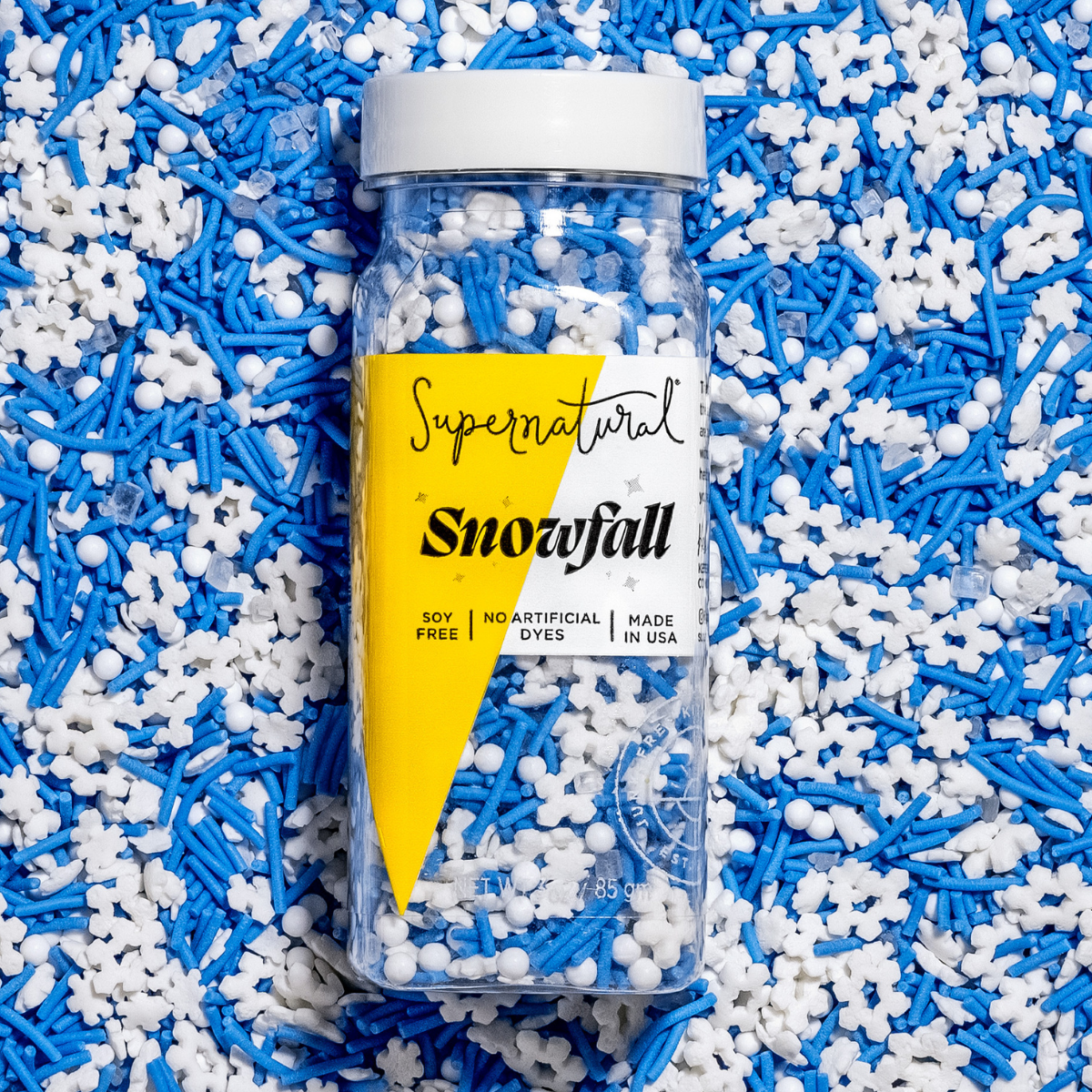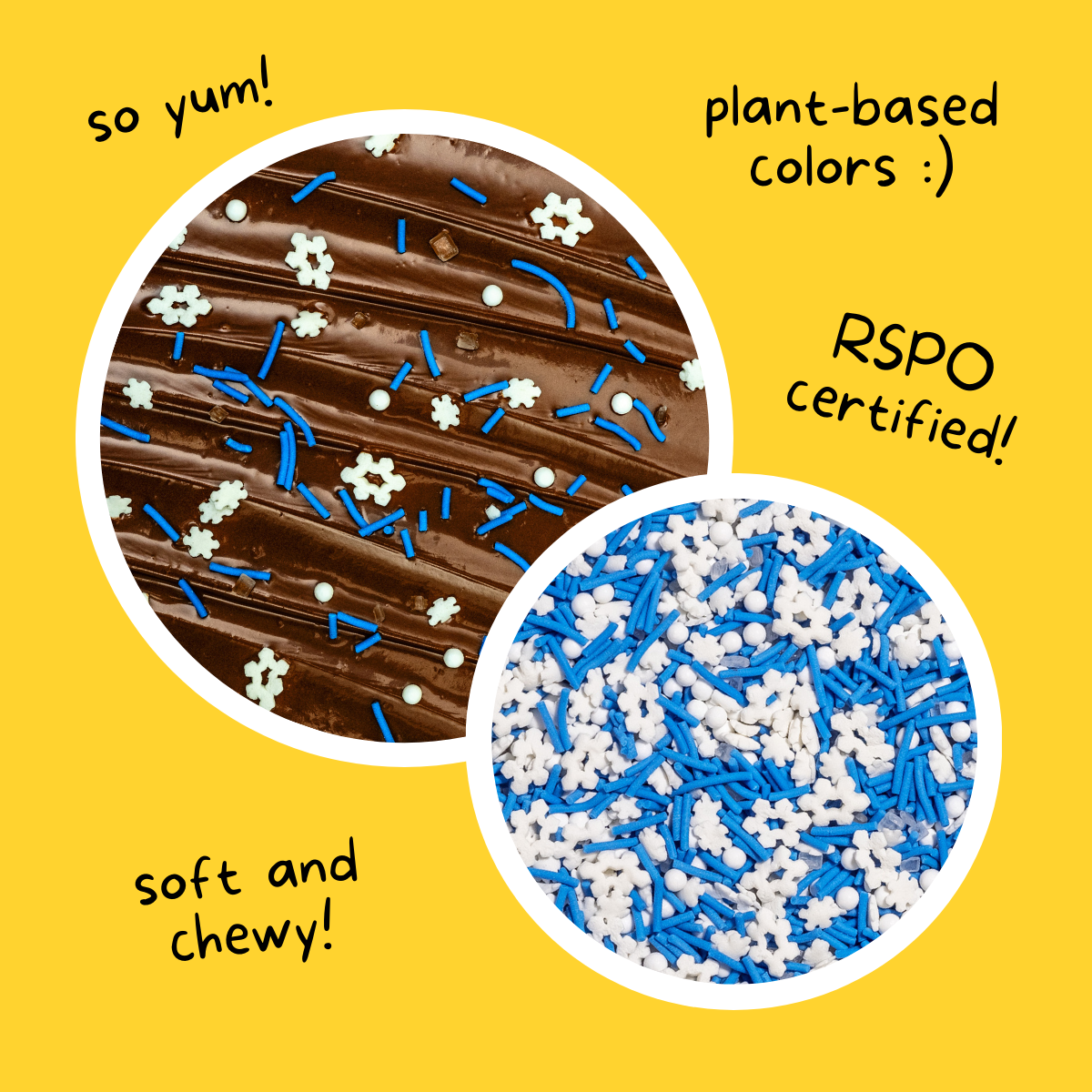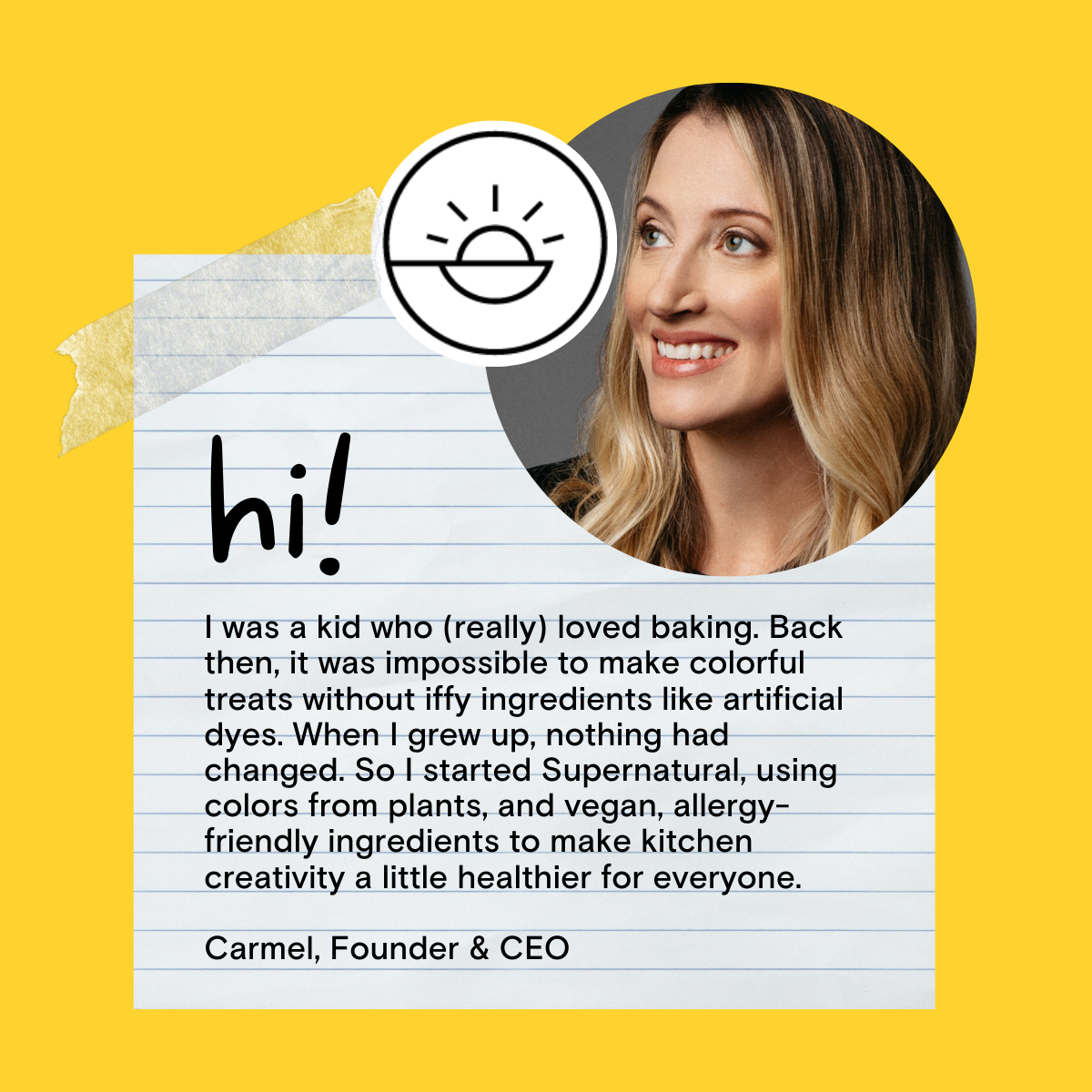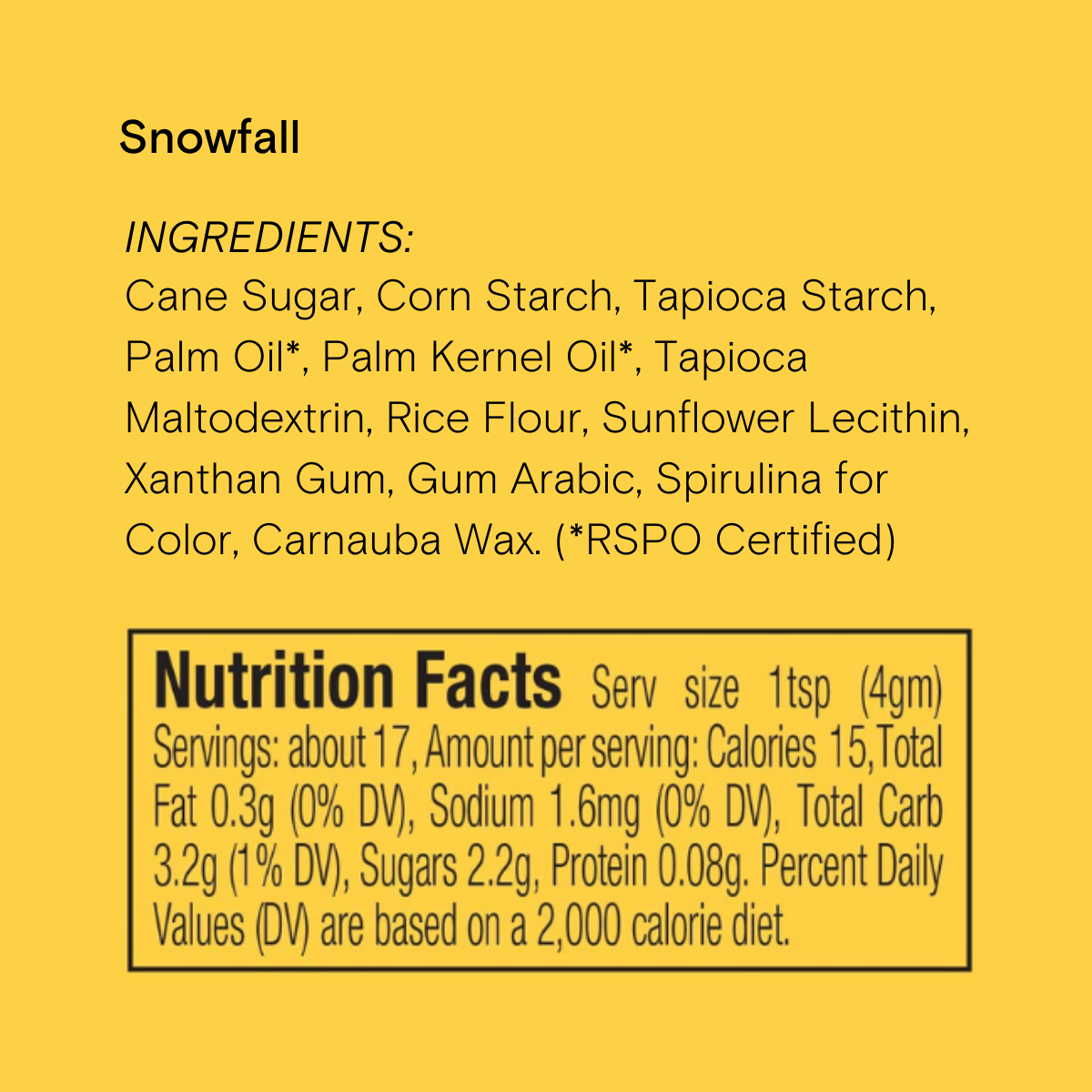Supernatural
Supernatural Snowfall Sprinkles
Supernatural Snowfall Sprinkles
Couldn't load pickup availability
3 oz jar
Finally, a snow-themed sprinkle blend made with zero titanium dioxide or artificial blue dyes. Featuring snowballs, snow flurries and snowflakes with a dash of ice crystals (aka sanding sugar), this better-for-you winter blend is as glittering as it is guiltless.
-
Colors from plants & spices
-
Soy and gluten free
-
No confectioner’s glaze
-
100% Vegan
-
Certified Kosher
-
3oz / 85gm
Ingredients: Cane Sugar, Corn Starch, Tapioca Starch, Palm Oil*, Palm Kernel Oil*, Tapioca Maltodextrin, Rice Flour, Sunflower Lecithin, Xanthan Gum, Gum Arabic, Spirulina for Color, Carnauba Wax. (*RSPO Certified)
Contains corn (maltodextrin, corn starch); packaged in a facility that also processes nuts. Looking for corn-free sprinkles? Try these!
Negative Effects of Food Dye
Artificial food dye consumption has increased by over 500% in the last 50 years. Purdue University found that the average American child consumes between 100-200mg of artificial food dye per day. That amount has never been studied for safety.
In the April 2021 Assessment, OEHHA states: "The body of evidence from human studies indicates that synthetic food dyes are associated with adverse neurobehavioral outcomes in children, and that children vary in their sensitivity to synthetic food dyes. [The studies] suggest that synthetic food dyes are associated with adverse neurobehavioral effects, such as inattentiveness, hyperactivity, and restlessness in sensitive children."
A small study found that 73% of children with ADHD showed a decrease in symptoms when artificial food dyes and preservatives were eliminated.
Commonly used dyes and preservatives in the United States are actually banned in other countries, due to the known toxicity and adverse effects of these chemicals. (Yellow #5, #6, Red #40, BHA, BHT, Titanium Dioxide, and beyond.) Synthetic dyes are found to damage DNA in rodents. P-Cresidine, a chemical in Red 40, is a "reasonably anticipated carcinogen" according to the US HHS.
"A little bit of food dye here and there", ends up becoming 100-200mg per day, on average. So, what are some of the adverse associations of these substances?
Red 40 - Hyperactivity; various types of cancer; allergies
Red 3 - Thyroid cancer and breast cancer; chromosomal damage
Yellow 5 - Thyroid cancer and breast cancer; behavioral changes; depression
Yellow 6 - Hyperactivity; adrenal and testicular cancer
Green 3 - Bladder and testicular cancer/tumors
Blue 1 - Hyperactivity; kidney tumors; asthma; chromosomal damage
Blue 2 - Hyperactivity; asthma; chromosomal damage; brain and bladder tumors
It is possible to break away from these toxic ingredients that seem to be in so many foods, on all sides! Knowledge is power. Real, nourishing food is grown and raised, not chemically made. And these vibrant fruit and vegetable dyes prove that non-toxicity is not lifeless or boring! The most beautiful colors are real colors.
Share










